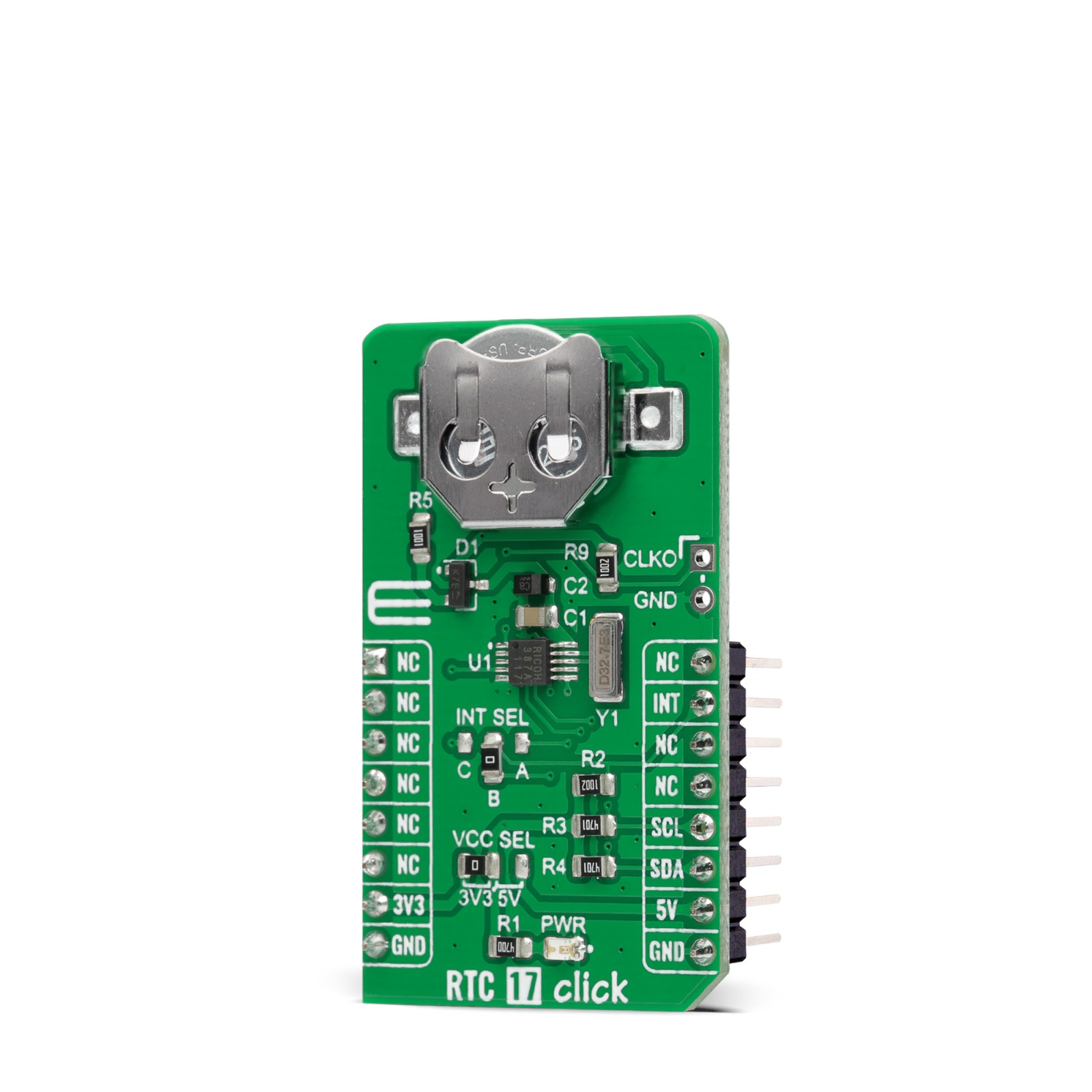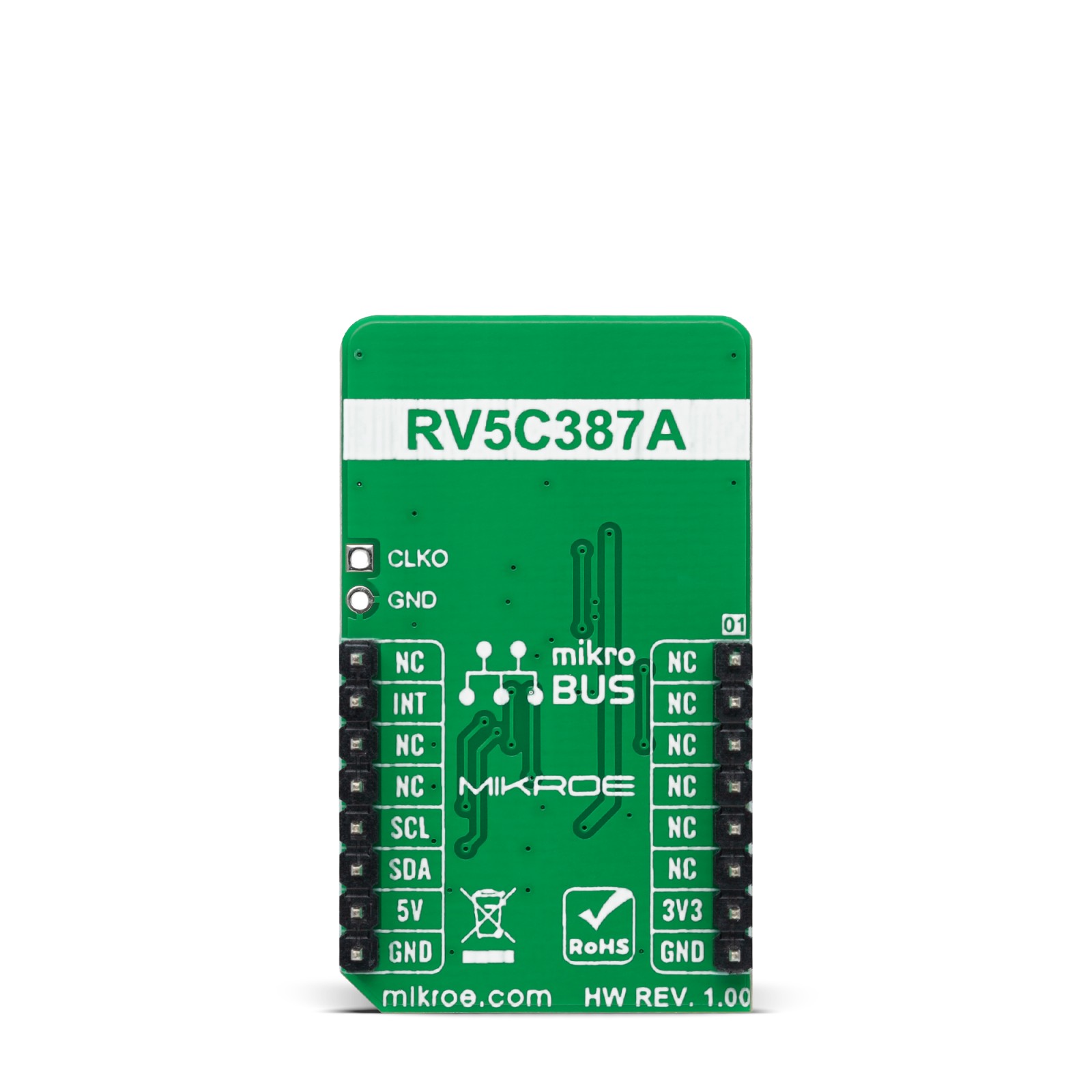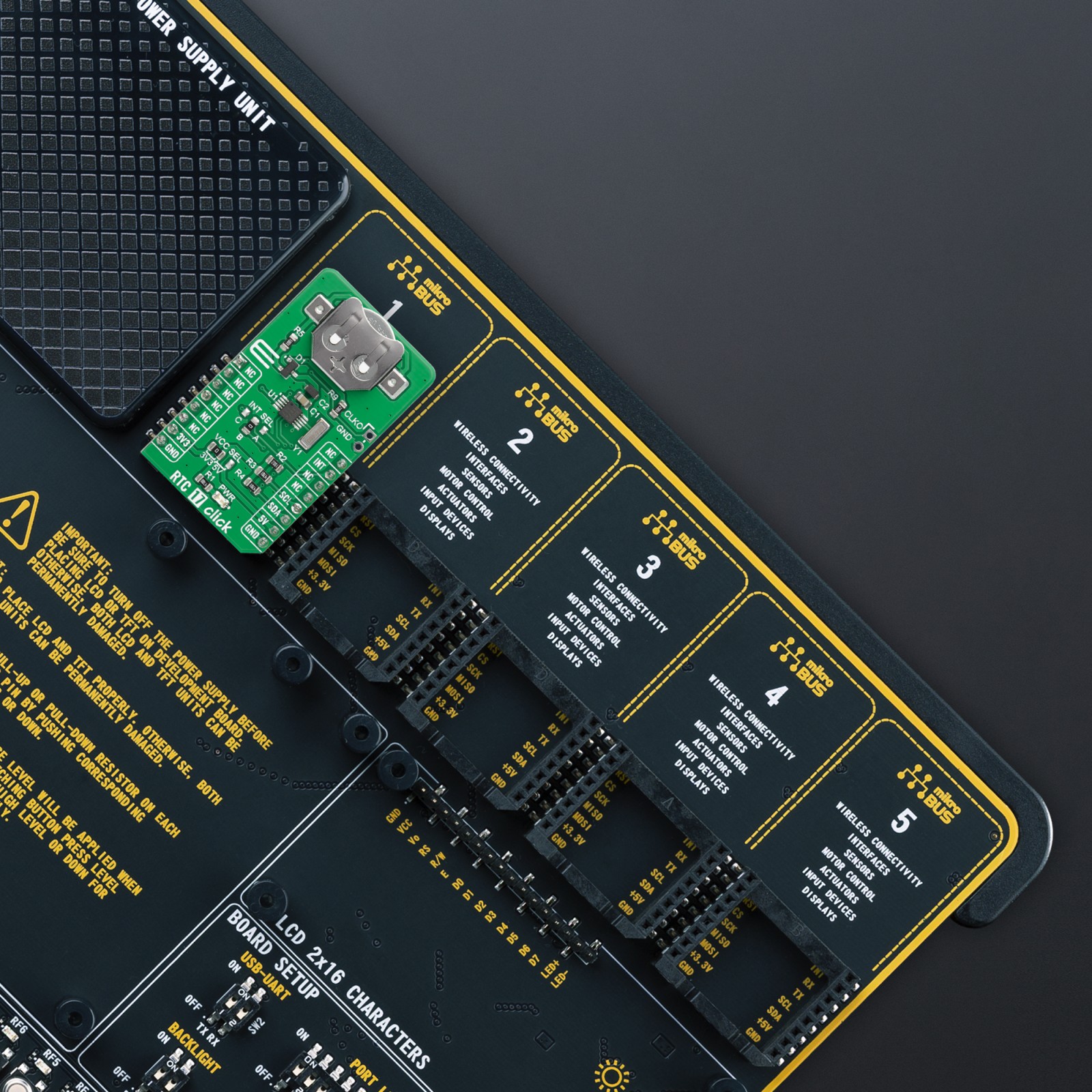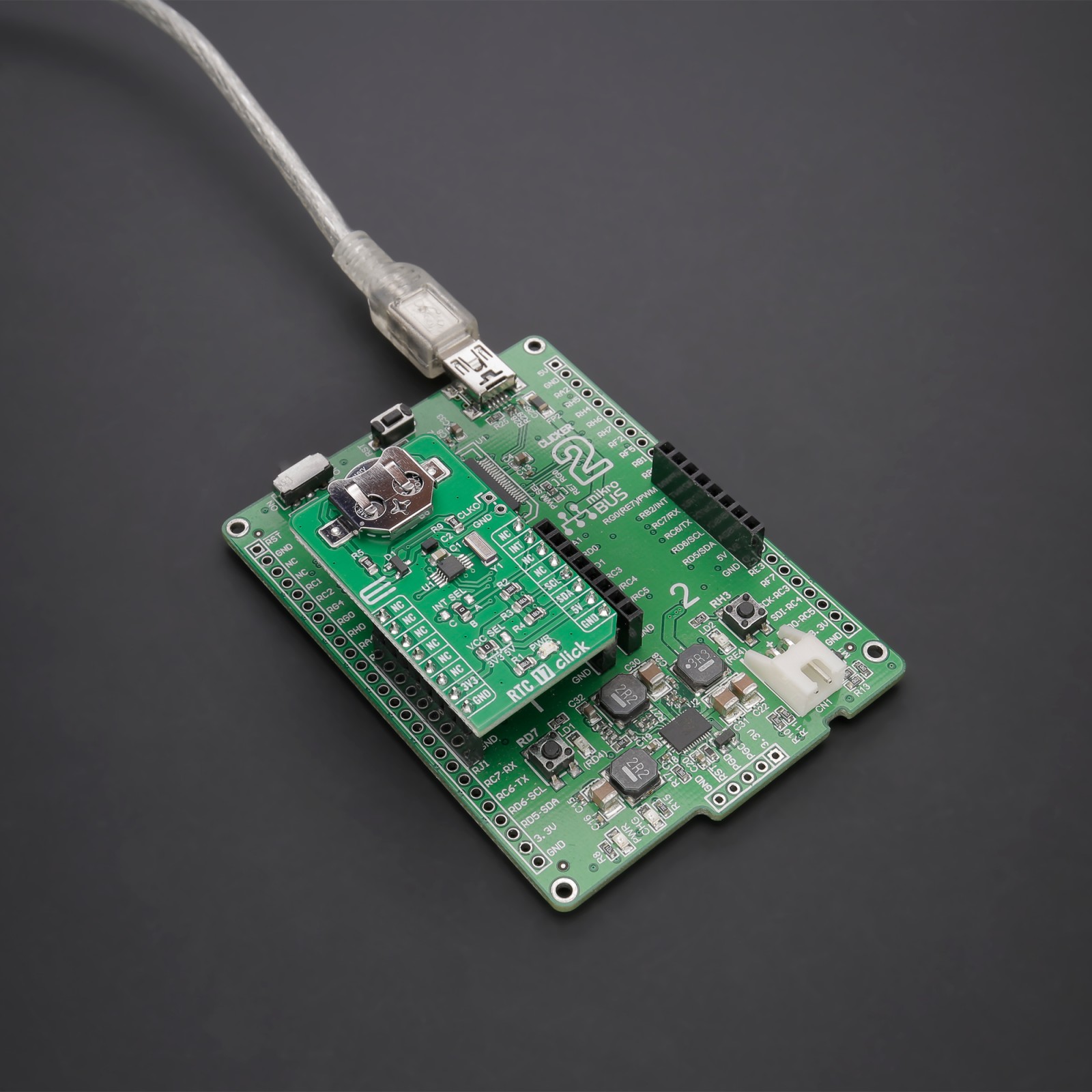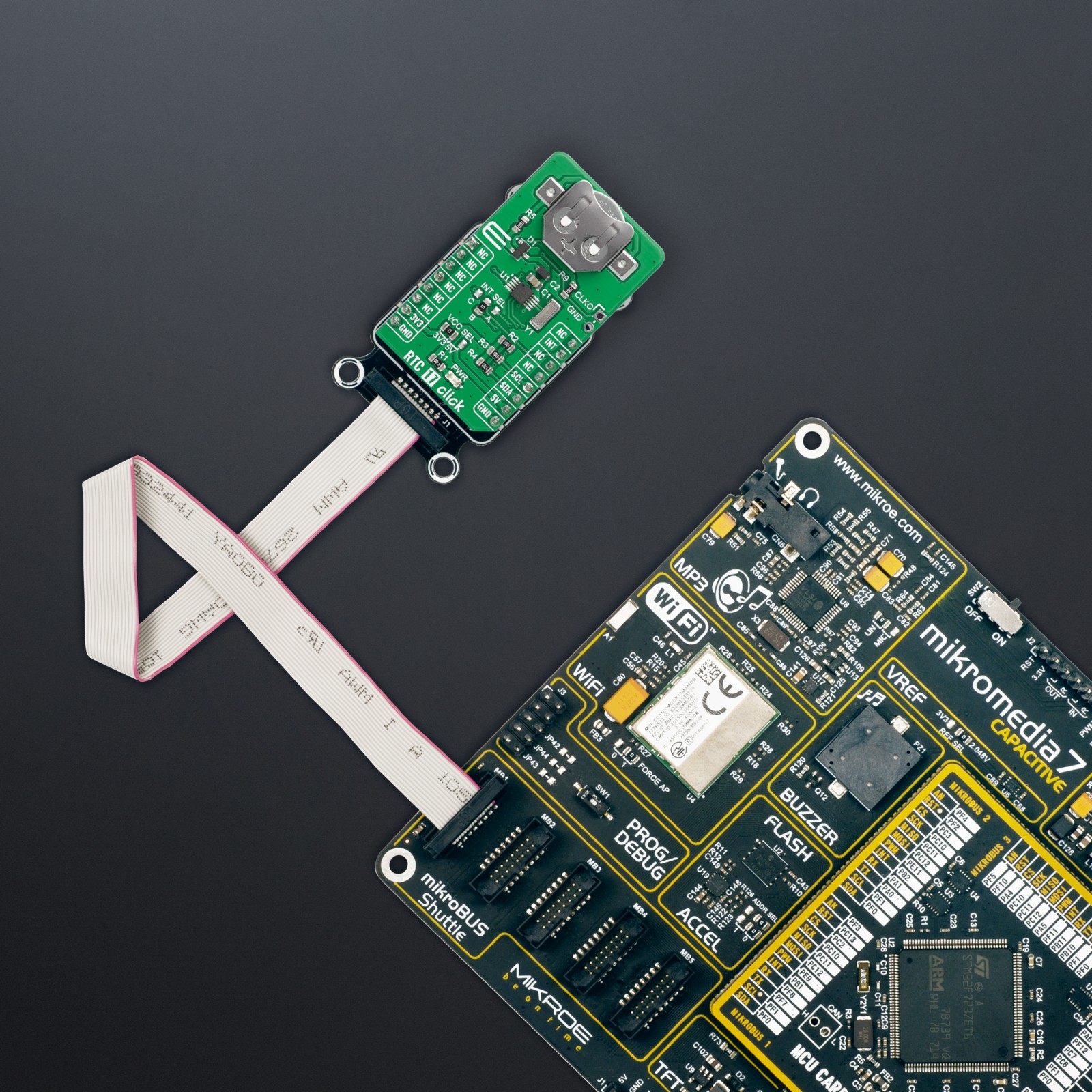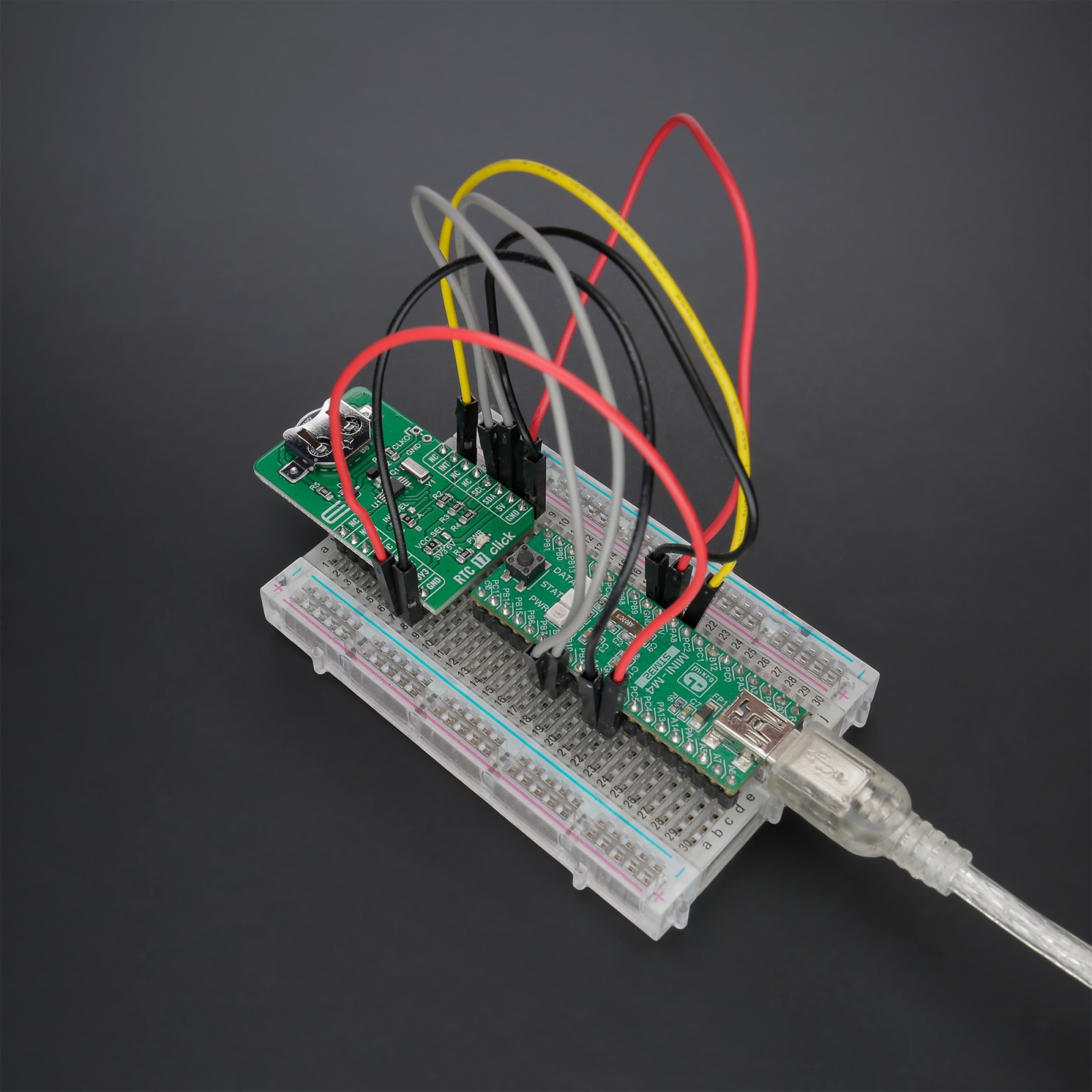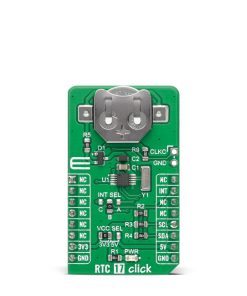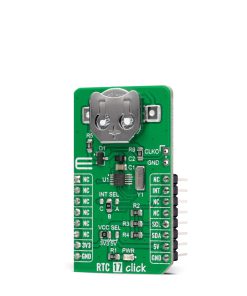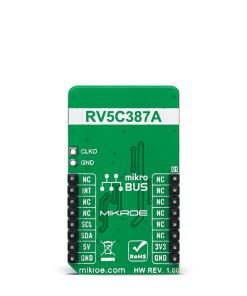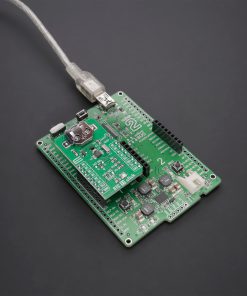RTC 17 Click
R260.00 ex. VAT
RTC 17 Click is a compact add-on board that accurately keeps the time of a day. This board features the RV5C387A, a CMOS real-time clock with a built-in interrupt generation function from Nisshinbo Micro Devices Inc, to perform serial transmission of time and calendar data to the MCU. The BU9873 provides information like year, month, day, weekday, hours, minutes, and seconds based on a 32.768kHz quartz crystal through an I2C serial interface to transmit time and calendar data to the MCU. It also has an alarm function that outputs an interrupt signal to the MCU when the day of the week, hour, or minute matches with the preset time. This Click board™ is suitable for various time-keeping applications, including daily alarms, metering applications, and others requiring an accurate RTC for their operation.
RTC 17 Click is supported by a mikroSDK compliant library, which includes functions that simplify software development. This Click board™ comes as a fully tested product, ready to be used on a system equipped with the mikroBUS™ socket.
Stock: Lead-time applicable.
| 5+ | R247.00 |
| 10+ | R234.00 |
| 15+ | R221.00 |
| 20+ | R212.68 |


